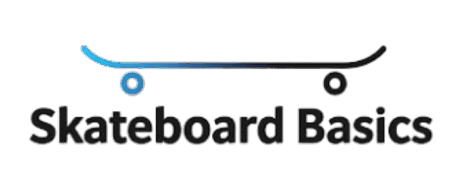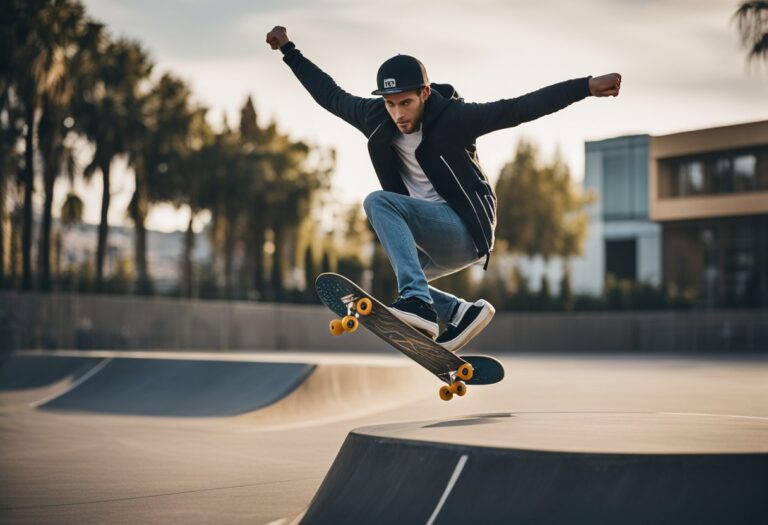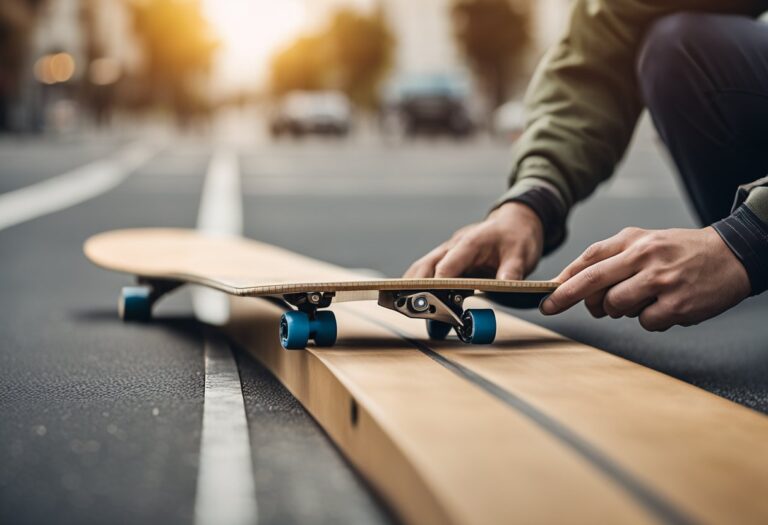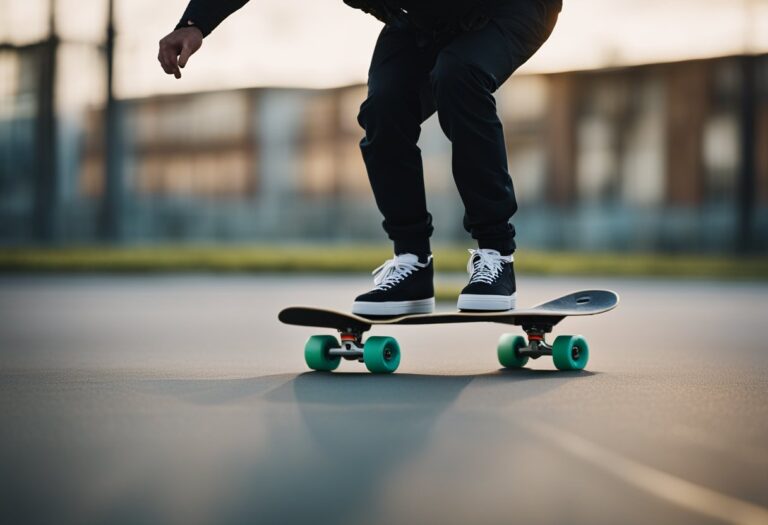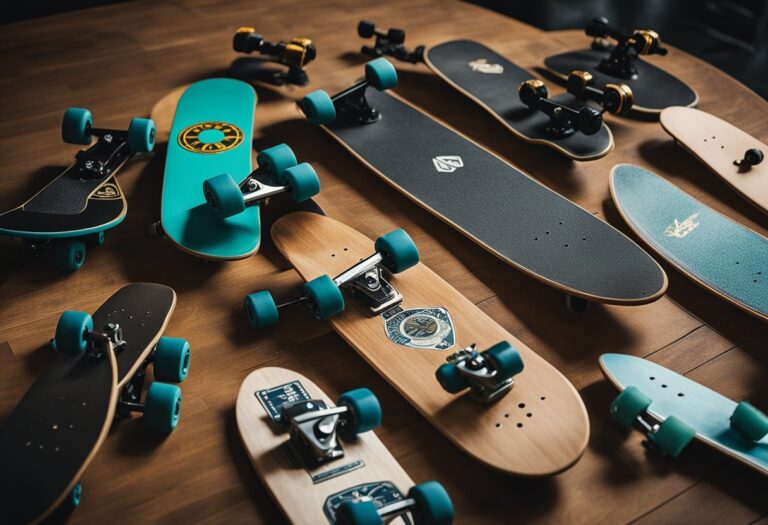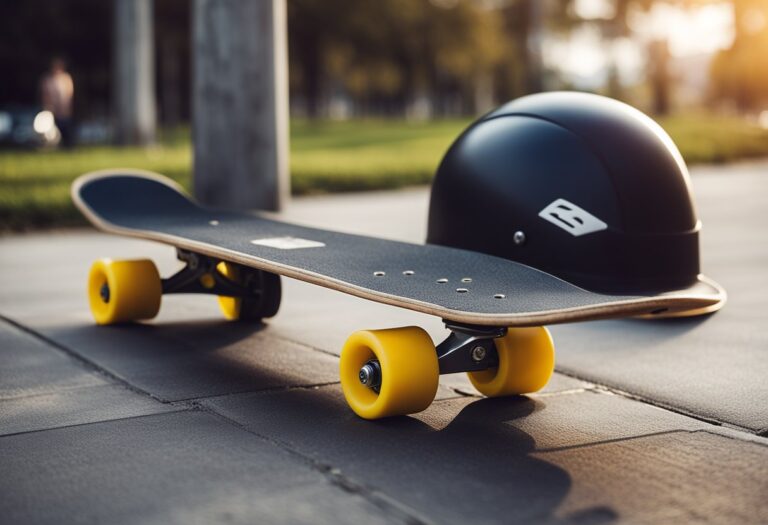What You Need to Have for Skateboarding as a Beginner
Skateboarding is a thrilling and exciting sport that has gained popularity over the years. It’s a great way to stay active and have fun, but if you’re a beginner, it can be a bit overwhelming. One of the most important things to consider when starting skateboarding is having the right gear.

Essential Gear To begin with, a skateboard is the most crucial piece of gear you’ll need. Skateboards come in different shapes and sizes, but as a beginner, it’s best to start with a standard skateboard. You’ll also need a good pair of skate shoes that provide comfort and support while allowing you to feel the board. Additionally, protective gear such as a helmet, knee and elbow pads, and wrist guards are essential to prevent injuries while learning.
Basic Skills Before hitting the skatepark, it’s important to learn the basic skills of skateboarding. This includes learning how to stand on the board, push, turn, and stop. It’s also important to practice balance and coordination to improve your overall control of the board. As a beginner, it’s best to start with the basics and gradually progress to more advanced tricks.
Key Takeaways
- Essential gear for skateboarding includes a skateboard, skate shoes, and protective gear such as a helmet, knee and elbow pads, and wrist guards.
- Basic skills such as standing on the board, pushing, turning, and stopping are crucial for beginners to learn.
- It’s important to start with the basics and gradually progress to more advanced tricks.
Essential Gear

When it comes to skateboarding, having the right gear is essential for both safety and performance. As a beginner, it can be overwhelming to know what gear is necessary. Here are the three main categories of essential gear that every beginner skateboarder needs to have:
Skateboard
The skateboard is the most important piece of gear for any skateboarder. As a beginner, it is recommended to start with a standard skateboard, which consists of a deck, trucks, wheels, and bearings. A good quality skateboard can last for years, so it is worth investing in a durable and reliable one. Skateboard decks come in various sizes, but for beginners, a deck size of 7.5 to 8 inches is ideal.
Safety Equipment
Safety should always come first when skateboarding, especially for beginners who are still getting used to the sport. Here are the safety equipment that every beginner skateboarder should have:
- Helmet: A helmet is the most important safety equipment for a skateboarder. It protects the head from serious injuries in case of a fall or collision. It is recommended to choose a helmet that fits well and has a hard outer shell and soft inner padding.
- Knee and Elbow Pads: Knee and elbow pads protect the joints from scrapes, bruises, and fractures. They are especially important for beginners who are still learning how to balance and control their skateboard.
- Wrist Guards: Wrist guards protect the wrists from sprains and fractures in case of a fall. They are essential for beginners who are still learning how to break their fall properly.
Skate Shoes
Skate shoes are specifically designed for skateboarding and provide the necessary support and grip for the rider. They have a flat sole and a reinforced toe cap that protects the foot from impact and wear. It is recommended to choose skate shoes that are comfortable, durable, and have good traction.
In conclusion, having the essential gear is crucial for any beginner skateboarder. By investing in a good quality skateboard, safety equipment, and skate shoes, beginners can enjoy skateboarding while staying safe and comfortable.
Basic Skills

Standing on the Board
The first skill to learn when starting skateboarding is standing on the board. It may seem easy, but it takes practice to get comfortable. Begin by placing your front foot on the board’s bolts and your back foot on the tail. Keep your feet parallel, with your toes hanging over the edge. Bend your knees slightly, and keep your weight centered over the board. Practice standing on the board until you feel comfortable and balanced.
Pushing
Pushing is the next skill to learn. Start by standing on the board with your front foot on the bolts and your back foot on the tail. Push off with your back foot to gain momentum. Once you have enough speed, place your back foot on the board and keep pushing with your front foot. Repeat the process to maintain your speed.
Turning
Turning is an essential skill to learn when skateboarding. To turn, lean your body in the direction you want to go. Keep your weight centered over the board and use your toes and heels to steer. Practice turning in both directions until you feel comfortable.
Stopping
Stopping is crucial for safety when skateboarding. The easiest way to stop is by dragging your back foot on the ground. To do this, lift your front foot and place it on the tail, then drag your back foot on the ground until you come to a stop. Practice stopping at different speeds to get comfortable with the technique.
By mastering these basic skills, beginners can start enjoying the sport of skateboarding. Remember to wear proper safety gear and practice in a safe environment. With practice and determination, anyone can become a skilled skateboarder.
Skatepark Etiquette

When going to a skatepark, it is important to follow proper etiquette to ensure a safe and enjoyable experience for everyone. Here are some guidelines to keep in mind:
- Always yield to other skaters who are already on the ramp or obstacle. Wait for your turn and avoid cutting in line.
- Be aware of your surroundings and keep an eye out for other skaters. Avoid skating too close to others to prevent collisions.
- Do not litter or leave trash around the skatepark. Use the provided trash cans and keep the area clean.
- Respect the park rules and regulations. Some skateparks may have specific hours of operation or rules regarding certain tricks or behavior.
- Do not hog the ramps or obstacles. Take turns and try not to spend too much time on one feature.
- Avoid being disruptive or causing a disturbance. Keep noise levels down and be mindful of others in the area.
- Lastly, be friendly and respectful to other skaters. Encourage and support each other, and remember that everyone is there to have fun and enjoy the sport.
Maintenance and Upkeep

Cleaning the Board
Keeping the skateboard clean is an important part of maintenance. Dirt and debris can accumulate on the board and decrease its performance. To clean the board, use a damp cloth to wipe off any dirt or grime. For tougher stains, a mild soap solution can be used. Avoid using harsh chemicals or abrasive materials as they can damage the board’s surface.
Tightening the Trucks
The trucks are the metal parts that connect the wheels to the board. Over time, they can become loose and affect the skateboard’s stability. To tighten the trucks, use a skate tool or wrench to adjust the kingpin nut. Turn the nut clockwise to tighten and counterclockwise to loosen. It’s important to keep the trucks tight enough to maintain stability, but not so tight that the board becomes difficult to turn.
Replacing the Wheels and Bearings
Wheels and bearings can wear out over time and affect the skateboard’s performance. To replace the wheels, use a skate tool to remove the nuts and washers holding them in place. Slide the old wheels off and replace them with new ones. To replace the bearings, use a bearing tool to remove the old ones and press in the new ones. It’s important to choose the right size and hardness of wheels for your riding style and terrain.
By following these maintenance and upkeep tips, beginners can keep their skateboards in good condition and enjoy a smoother ride.
Progression Tips

Learning Tricks
As a beginner skateboarder, it’s important to start with the basics before moving on to more advanced tricks. Start with learning how to ride and turn on the board, then progress to ollies and kickflips. Watching tutorials and practicing consistently can help improve skills and make learning new tricks easier.
Building Confidence
Skateboarding can be intimidating for beginners, but building confidence is key to progressing. Start by practicing in a safe and comfortable environment, such as a skatepark or empty parking lot. Wearing protective gear, such as a helmet and pads, can also help build confidence and prevent injuries.
Skating Regularly
Consistency is key to improving as a skateboarder. Try to skate regularly, even if it’s just for a few minutes a day. This can help build muscle memory and improve overall skills. It’s also important to listen to the body and take breaks when needed to prevent burnout or injury.
By following these progression tips, beginner skateboarders can improve their skills and build confidence on the board. Remember to always prioritize safety and have fun while skating.
Frequently Asked Questions

What essential equipment is needed to start skateboarding?
To start skateboarding, beginners need a skateboard, grip tape, trucks, wheels, and bearings. A good skateboard should have a sturdy deck, trucks that match the width of the board, wheels that are appropriate for the type of terrain, and bearings that are smooth and durable.
What are the best types of skateboards for beginners?
For beginners, it is recommended to start with a skateboard that has a wider deck, around 8 inches, and medium-soft wheels. A cruiser board or a longboard may also be a good option for those who want to focus on cruising and carving.
What safety gear should beginners wear when skateboarding?
Safety gear is essential for beginners to prevent injuries. Beginners should wear a helmet, knee pads, elbow pads, and wrist guards. It is also recommended to wear proper shoes that provide good grip and support.
What are the first basic skateboarding skills a beginner should learn?
The first basic skills a beginner should learn are how to balance on the board, push off, turn, and stop. It is important to practice these skills in a safe and controlled environment before attempting more advanced tricks.
How do you choose the right size skateboard for a beginner?
The right size skateboard for a beginner depends on their height and shoe size. A general rule of thumb is to choose a deck that is about as wide as the length of their foot. It is also important to consider the weight capacity of the board and the type of riding style.
What tips can help a beginner learn to turn and stop on a skateboard?
To turn on a skateboard, beginners should shift their weight in the direction they want to turn and lean slightly. To stop, beginners should drag their back foot on the ground or use the tail of the board to come to a gradual stop. It is important to practice turning and stopping in a safe and controlled environment before attempting more advanced maneuvers.
